Written by Howard Piltz and published by Pen & Sword, this hardback book measures around 23.65 cm x 16.41 cm, is 120 pages long and has 250 colour illustrations. It has a published price of £16.99, but at the time of writing Pen & Sword are offering it for £15.29 and it can be purchased from Amazon for £11.28.
This is the author’s fourth book in his “Transport Philately” series, this one being dedicated to stamps featuring trams and buses from around the world. It would seem that trams and buses are not as popular subjects for postage stamps as aviation or wildlife, but the author has managed to include illustrations for each of the countries in the book. The book is divided into those countries that have issued stamps bearing illustrations of trams and buses, but does not go into any detail about each country’s postal history.
At first sight, this book looked full of promise. It is lavishly illustrated in full colour without a dust cover but with the dust cover design printed directly onto the hard cover. But once inside the book, my initial hopes seemed misplaced.
Many of the country introductions seem to have been lifted out of an encyclopaedia, such as “Hungary is a landlocked country with its capital, Budapest, bisected by the Danube River”. Surely such information is superfluous when discussing a country’s postage stamps. Also, the statement “just why do the country’s stamps bear the title Magyar?” seems rather obvious, as Magyar is the country’s Hungarian name.
We are also told that Finns refer to their country as ‘Suomi’, hence the title on their stamps but no one knows for sure where the name came from or why. Is that really relevant, as all a philatelist needs to know is that Finnish stamps are imprinted with ‘Suomi’.
Postage stamps are not very large, but too often the author refers to a particular part of a stamp that is virtually indecipherable. For example, the Great Britain entry refers to an icon of the European Post and Tele-commmunication Administrations, but as the icons on the stamps illustrated are just 3mm in diameter, one needs a magnifying glass to actually spot it.
Throughout the book there are many odd statements, such as Belgium is a relatively new nation. I’m sure that would be news to people living there.
The choice of images often seems haphazard, as Austria has two identical views of a sheet of eight stamps and Switzerland has a view of a sheet of eight identical stamps. Italy has a card with seven images, only one of which shows a tram, whilst Iraq has a sheet of 12 stamps, of which eight show aircraft and trains, which are both outside the scope of the book.
In recent years, Britain has seen many special issues of postage stamps. The ones shown below suit this book perfectly.
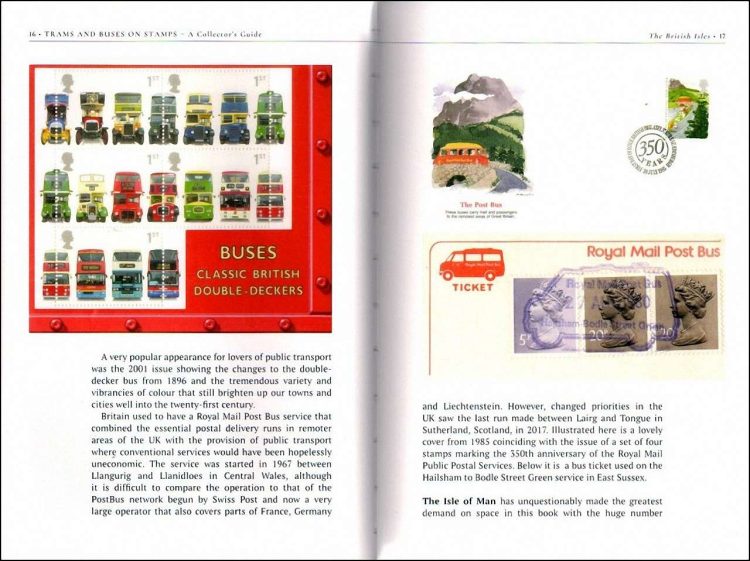
For such a small island, Jersey has issued more than its fair share of stamps. The ones shown below feature buses against a backdrop of Jersey scenery.
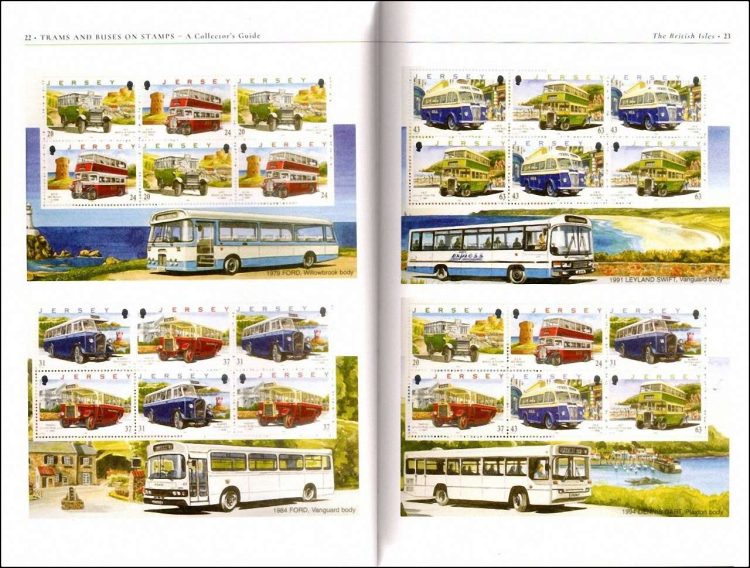
Until about ten years ago, one attraction of a holiday in Malta was its ancient buses. Most of these have now been replaced by more-modern ones, but they are remembered in this range of postage stamps.
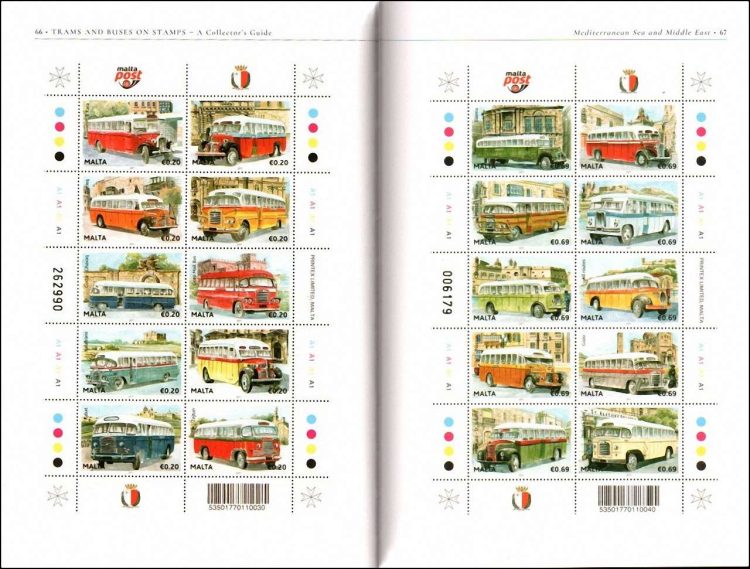
Illustrations chosen for a country’s postage stamps often give us the chance to see a country’s heritage, such as the ones from Vietnam and Singapore seen below.
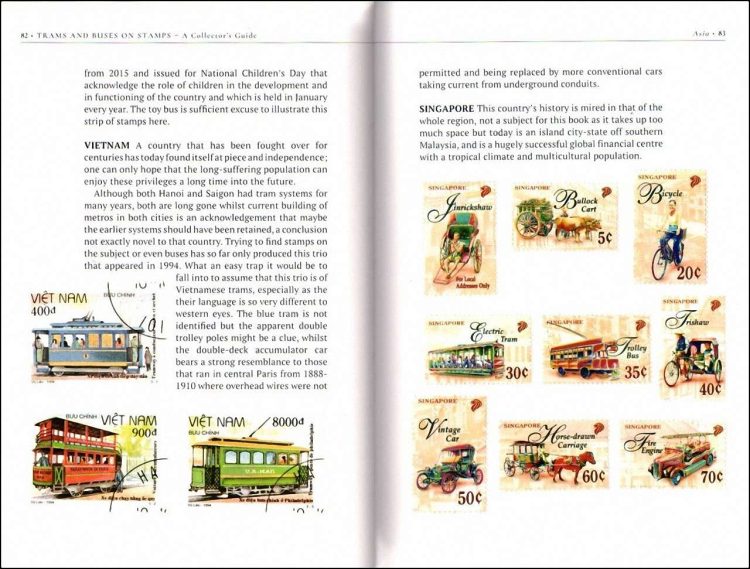
The stamps shown for Australia seem to be a poor selection. I couldn’t understand the logic of including the sheets on the right when there are other stamps more suitable to the content of this book, showing subjects such as an 1878 Adelaide horse-drawn tram, 1884 Sydney steam tram, or an 1886 Melbourne cable-hauled tram.
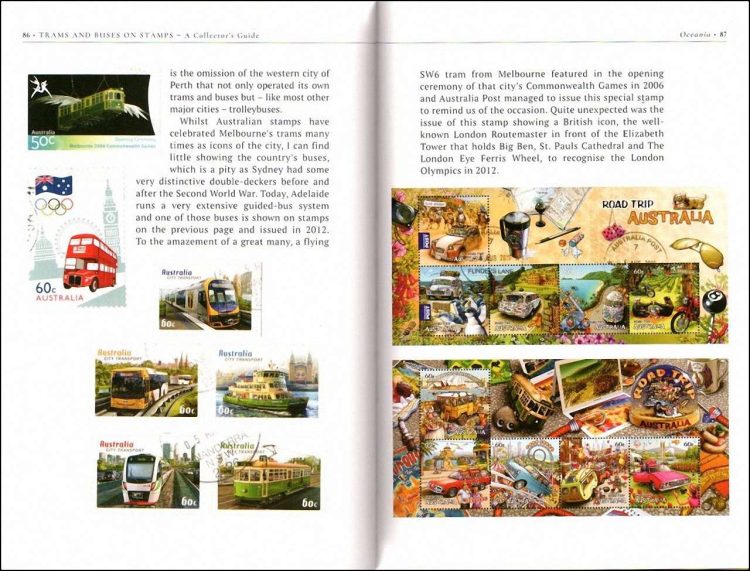
With seven pages Canada occupies more than its fair share of space in the book, and there are five pages of illustrations showing 37 stamps, of which only two show a tram and a bus. Also, two pages have a copy of the same sheet of stamps, Why the author has included the stamps shown here is rather baffling. On the left under Canada is a stamp issued by São Tomé and Príncipe, which is an island country in the Gulf of Guinea, off the coast of Central Africa. Perhaps it is because the stamp depicts a tram from Toronto, whereas the sheet on the right seems to have no connection with the book’s theme of Trams and buses.
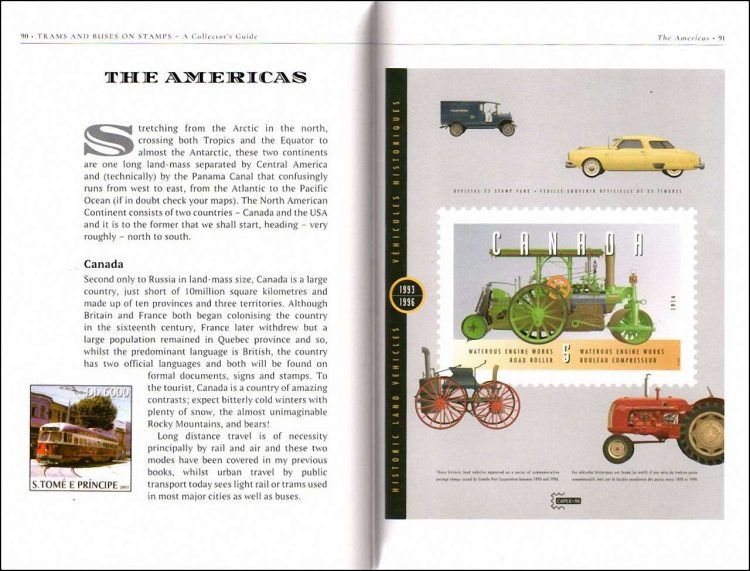
In summary, this is a colourful look at postage stamps that depict trams and buses from around the world. The book includes information for budding philatelists on beginning and building a collection, and how to store and display stamps. It does not go into great detail and with writing that is simple and understandable the book seems to be aimed at newcomers to the hobby. A beautifully presented book that would be an ideal gift for any stamp collector. Recommend for newcomers to philately and fans of trams and buses.
The book is available to purchase from Amazon and from Pen & Sword.
We would like to thank Pen & Sword for providing RailAdvent with a copy of the book for review.






Responses